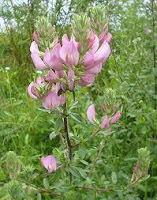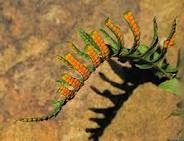Wood anemones as you might expect are found in woods and shady places. Like Tickle Me and wood sorrel, they close their flowers at the hint of rain and close at night, so that they are protected from dew. They are sometimes referred to as wood crowfoot as they are members of the buttercup or Ranunculaceae family of plants. As such they are related to the Lesser Celandine, marsh marigolds, black cohosh, and goldenseal.
 The whole plant contains protoanemonin which can cause skin and gastrointestinal irritation, although this turns to harmless anemonin when it is heated or dried. The plant is indigenous to most of
The whole plant contains protoanemonin which can cause skin and gastrointestinal irritation, although this turns to harmless anemonin when it is heated or dried. The plant is indigenous to most of It is called windflower as ‘anemone’ comes from the Greek anemos which means wind, so Pliny writes about it as the windflower, believing that the flowers only opened when the March winds blew.
 Its leaves have been used as a counter-irritant to rheumatic pains as stinking hellebore, another relative and of course stinging nettles. All above ground parts of the wood anemone have been used in previous times in folk medicine in
Its leaves have been used as a counter-irritant to rheumatic pains as stinking hellebore, another relative and of course stinging nettles. All above ground parts of the wood anemone have been used in previous times in folk medicine in It has something of a sinister reputation historically, although it is not known why this is unless it caused death when people ate the root or ingested other parts of the raw plant. The ancient Egyptians used it as a symbol of sickness, and the Chinese called it the “Flower of Death.” The Romans, on the other hand, would pick it to ward off fever.
Culpeper says that the root may be chewed, but the fresh root will cause burning and mouth ulcers. This is what he has to write about it: -
 “Government and virtues. It is under the dominion of Mars, being supposed to be a kind of crow-foot. The leaves provoke the terms mightily, being boiled and the decoction drunk. The body being bathed with the decoction of them cures the leprosy. The leaves being stamped, and the juice snuffed up the nose, purges the head greatly: so doth the root being chewed in the mouth, for it causeth much spitting; and brings away many watery and phlegmatic humours, and is therefore excellent for the lethargy. And when all is done, let physicians say what they please, all the pills in the dispensatory purge not the head like to hot things held in the mouth: being made into an ointment, and the eye-lids anointed therewith, it helps inflammations of the eyes, whereby it is palpable that every stronger draweth its weaker light; the same ointment is exceeding good to cleanse malignant and corroding ulcers.”
“Government and virtues. It is under the dominion of Mars, being supposed to be a kind of crow-foot. The leaves provoke the terms mightily, being boiled and the decoction drunk. The body being bathed with the decoction of them cures the leprosy. The leaves being stamped, and the juice snuffed up the nose, purges the head greatly: so doth the root being chewed in the mouth, for it causeth much spitting; and brings away many watery and phlegmatic humours, and is therefore excellent for the lethargy. And when all is done, let physicians say what they please, all the pills in the dispensatory purge not the head like to hot things held in the mouth: being made into an ointment, and the eye-lids anointed therewith, it helps inflammations of the eyes, whereby it is palpable that every stronger draweth its weaker light; the same ointment is exceeding good to cleanse malignant and corroding ulcers.” It is wise to remember that Culpeper was writing his Complete Herball in the 17th century, and the wood anemone is now known to have harmful side effects; it is best left in its habitat - or you might upset the fairies, who are said to sleep in the centre of the flowers at night when they close the curtains tightly for protection from the elements.
The wood anemone has been the subject of many poems, this sonnet by John Clare (1793 – 1864)
“The wood anemone through dead oak leaves
And in the thickest woods now blooms anew,
And where the green briar and the bramble weaves
Thick clumps o'green, anemones thicker grew,
And weeping flowers in thousands pearled in dew
People the woods and brakes, hid hollows there,
White, yellow and purple-hued the wide wood through.
What pretty drooping weeping flowers they are:
The clipt-frilled leaves, the slender stalk they bear
On which the drooping flower hangs weeping dew,
How beautiful through April time and May
The woods look, filled with wild anemone;
And every little spinney now looks gay
With flowers mid brushwood and the huge oak tree.”
and this poem by Emily Dickinson:
And in the thickest woods now blooms anew,
And where the green briar and the bramble weaves
Thick clumps o'green, anemones thicker grew,
And weeping flowers in thousands pearled in dew
People the woods and brakes, hid hollows there,
White, yellow and purple-hued the wide wood through.
What pretty drooping weeping flowers they are:
The clipt-frilled leaves, the slender stalk they bear
On which the drooping flower hangs weeping dew,
How beautiful through April time and May
The woods look, filled with wild anemone;
And every little spinney now looks gay
With flowers mid brushwood and the huge oak tree.”
and this poem by Emily Dickinson:
“Summer for thee, grant I may be
When Summer days are flown!
Thy music still, when Whipporwill
And Oriole -- are done!
For thee to bloom, I'll skip the tomb
And row my blossoms o'er!
Pray gather me --
Anemone --
Thy flower -- forevermore!”
These poems are only two examples of the wood anemone’s appearances in poetry.





































